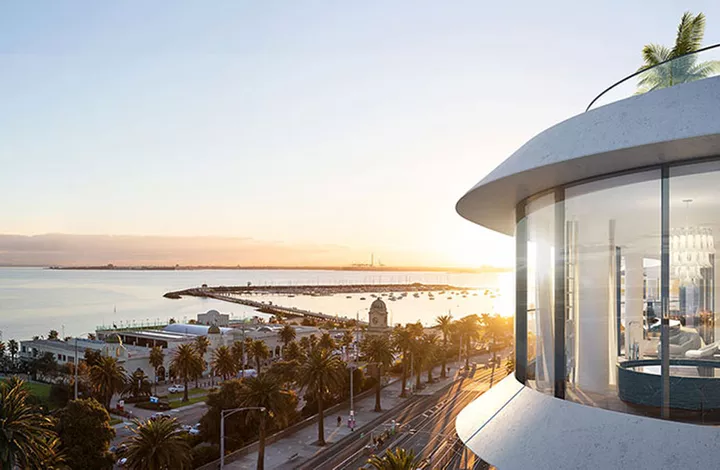Australia’s Residential Property Market Regains Its Confidence
The residential property market is finally showing signs of optimism as it emerges from one of the property industry’s biggest downturns.
Since October 2018, house and unit prices in Sydney and Melbourne have decelerated rapidly, dragging the country’s housing market down to its slowest point in 12 years, but emerging research is showing that the worst may be behind us.
Australia has felt the full effect of the decline in the residential market in the forms of lower buyer confidence, limited access to finance and stricter lending conditions in major metropolitan markets—all things that are expected to moderately rebound over the later months this year.
As optimism returns to the market, the industry is wondering: what comes next?
To answer that question, CBRE partnered with The Urban Developer to deliver a Residential Property Market Report that offers professional insight into these changing market conditions, and the future of residential property in Australia.
Home ownership
The hard fact is, Australian home ownership is in decline.
Following several years of stricter lending conditions imposed by APRA, home ownership in Australia declined from a 50 year low of 67 per cent in 2011, to 65 per cent in 2016. But, as population grows, home ownership will follow.
Long term fundamentals for population growth and continued residential property development have remained firm. The number of Australian households is projected to increase from 8.42 million to over 12.5 million by 2036.
Overall population growth in Australia is at an all-time record high. Melbourne and Sydney are both growing at more than 100,000 new entrants per annum, while Brisbane is experiencing an upswing in interstate migration.
These staggering population trends demonstrate the ongoing demand for residential development and Australia’s continued focus on home ownership.

The market’s previously dire conditions also prompted Australia’s top industry regulators to relax their criteria to invite a broader demographic of buyers back into the market.
In 2018, APRA announced it would reverse its temporary supervisory benchmark on mortgage lending, which put a 30 per cent cap on interest-only lending in an effort to reduce high-risk loans in the market and force banks to mitigate risk.
The prudential regulator then went one step further and announced a reduction in the minimum assessment mortgage stress levels from 7 per cent to 6 per cent.
This key constraint on mortgage credit was lifted in a bid to encourage a wider pool of customers into the housing market, and to allow home buyers to potentially borrow larger sums to fund their purchases.
“With two interest rate cuts and APRA calming the serviceability criteria, we’ve seen a huge influx in sales across all of our portfolio projects, and we’re starting to see buyer confidence return,” CBRE Victoria managing director Andrew Leoncelli said.
Changes at a policy level
In the lead up to the 2019 federal election, a dark cloud hung over the market as the Labor Party’s controversial policies on negative gearing made investors and buyers even more uncertain about their futures. Now that the Coalition has been re-elected, the impost to residential property investment has since evaporated.
Leoncelli also believes the Liberal Party winning the federal election was a boost for the industry and general confidence in the sector.
“The shock win that the Liberal Party had instantly gave us a significant bounce in the volume of buyer activity and enquiry,” Leoncelli said.
“The first six weeks after [the election] we had a 105 per cent increase in enquiry and we had a 250 per cent increase in buyer activity.”

Another consideration is the Morrison government’s First Home Loan Deposit Scheme, which if approved, will begin on January 1, 2020 and become available to people earning up to $125,000 annually, or couples with a joint income of up to $200,000.
Through the scheme, people can purchase a first new home with a 5 per cent deposit (previously 20 per cent) and without purchasing lenders mortgage insurance, which is a saving of up to $10,000. The scheme is anticipated to kick-start the sale of residential property and help the market to recover.
Research from the CBRE Residential Projects Market Perspective report shows that a period of broad indecision in the market will be counterbalanced by increased activity from investors.
Over the next two years, with Australia’s increasing population and reduction of new developments, we will begin to see an undersupply in the apartment market. Coupled with the renewed interest from first home buyers, this should see both developments and sales return to normal rates.
The balance shifts towards owner occupiers
While Australian total dwelling completions have peaked, there is now a discernible shift towards owner occupiers in the market. The national proportion of owner-occupier loans to first home buyers increased by 18 per cent last year, its highest level in over five years.
“I feel that the bottom of the market is behind us because the last three months of last year and the first six months of this year were particularly difficult,” Leoncelli said.
“The worst part of the last 9-month period [was] that vendors were very keen to accept any deal that got vaguely close to the mark. But that has started to change and the confidence of the developer has started to change.
“We’re getting local owner-occupiers, not just first-home buyers but second-time buyers and downsizers buying off the plan.”
Australia’s residential property market has now entered a new phase, where it has to focus more on marketing to a new profile of buyer, which is increasingly local and an owner-occupier.
Developers who can understand and adapt to these changes will achieve more sales through positioning their projects correctly. This process requires greater consideration from the developer of what goes into a residential project and the overall useability and attractiveness of the development.
CBRE estimates that off-plan sales will remain strong for property in iconic positions and demand will come from owner-occupiers, downsizers, first home buyers and projects targeted to luxury markets. Well-branded and large-scale projects are also predicted to do well over the coming months.
“Clearance rates in Melbourne have really responded quite dramatically. We are starting to see the clearance rates up around the high 60s and low 70s back where they were before [we] had this banking-induced and APRA-induced and Reserve Bank-induced property slowdown,” Leoncelli said.
“Into the future, we need this current momentum to continue. We need clearance rates to continue to remain at a high level and we need buyer activity to continue.
“This momentum is hard to get, but we will see owner-occupiers continue to buy – especially in Melbourne where it’s particularly hard to find a rental vacancy.”
The Urban Developer is proud to partner with CBRE to deliver this article to you. In doing so, we can continue to publish our free daily news, information, insights and opinion to you, our valued readers.













